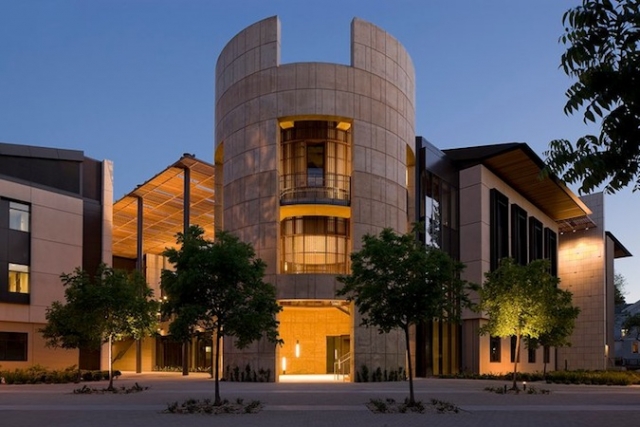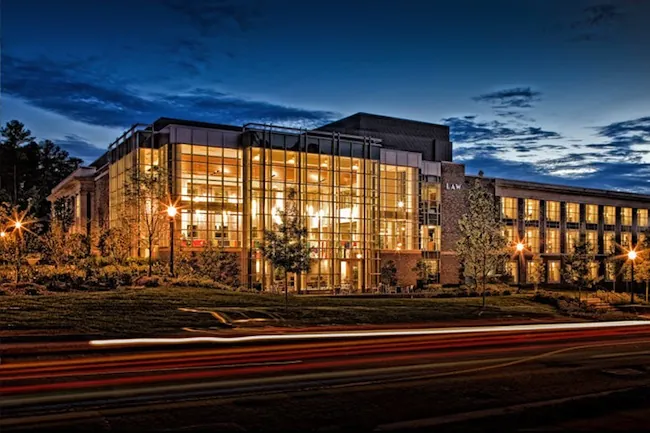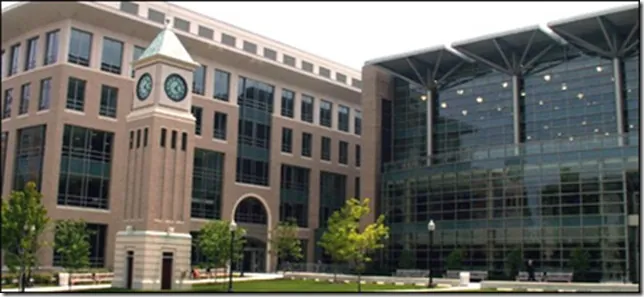
Stanford Law School
Placement turned out to be a mixed bag for Yale Law. Just 83.9% of Yale Law grads held jobs by graduation, lower than both Stanford Law 87.4%) and Harvard Law (91.3%). Yale Law grads also lagged behind their competitors within 10 months of graduation (83.4% vs. Stanford’s 90.1% and Harvard’s 92%). This deficit, however, has historical roots. Traditionally, Yale Law grads choose high prestige judicial clerkships This year, the school beat out Harvard Law by a 30.5%-to-21.1% margin. This year, however, Stanford Law actually placed graduates in more clerkships than Yale Law: 31.5% vs. 30.5%. So why did Yale Law still retain the #1 spot after falling short to Stanford Law in outputs?
Call it death by a thousand cuts.
For one, the newly-implemented debt measures gave Yale Law some breathing room. Yale Law grads accumulated a lower debt level by graduation than Stanford Law: $135,680 vs. $146,235 (though the percentage of Stanford Law grads leaving with debt was lower than Yale Law: 60.8% vs. 66.2%). In this measure, Harvard Law – $170,866 and 69.5% – trailed well behind both. With bar passage – 2.25% of weight – Yale Law’s 96.4% rate edged out Stanford Law (92.4%) – even though it (again) fell short of Harvard Law (98.9%). However, Yale Law won the day when it came to library investment, worth a 9% weight. The school boasts a larger library staff and seating than Stanford. More than that, the Yale Law library features nearly three times as many titles as Stanford Law – with the overall university library boasting nearly 2.2 million more volumes than Stanford University.

Duke Law School library
WHO’S UP AND WHO’S DOWN?
Overall, there was minimal movement among the T14. Duke Law returned to the Top 10, courtesy of a 3-point improvement in placement and a 1-point bump in bar passage. In contrast, Northwestern Law tumbled out of the Top 10 despite higher placement rates and a professional assessment score. The reason: Duke Law made larger strides in LSAT scores, while Northwestern Law fell behind Michigan Law in Peer Assessment and debt load.
In a year disrupted by pandemic, the Top 20 law schools remained essentially the same. Vanderbilt Law gained two spots, while UCLA Law and the Georgetown Law Center switched places. Beyond that marker, there were several notable moves. Florida Law inched up near the Top 20, going from 24th to 21st. The University of North Carolina also sneaked up three spots to claim 24th. After losing 6 spots in 2021, Alabama Law bounced back to re-claim 25th. At the same time, George Washington and the University of Georgia tied at 27th, with the former losing 4 spots and the latter gaining 4 spots.
This year featured several winners and losers. Emory Law, for one fell out of the Top 25, ending up at 29th. UC-Irvine and Fordham each lost 8 places, with Washington & Lee University and the College of William & Mary both falling 4 places. At the same time, the University of Wisconsin and UC-Hastings both moved up 9 spots.
One reason: Consistent with tradition, the 2022 U.S. News Law School ranking was riddled with ties – 13 to be exact. That includes a 6 school pile-up at 29, a 5 school cluster at 35, and 3 schools all claiming the #16 spot. Worse, there were three ties in the Top 10 at 4th, 6th, and 10th – a red flag that perhaps the measures and weights require further revision.

Georgetown Law Center
GEORGETOWN REMAINS TOP PART-TIME PROGRAM
Along with full-time law schools, U.S. News ranks part-time programs. This ranking applies a different methodology. Like the full-time ranking, survey responses represent a sizable chunk of the weight – 50% to be exact. In this case, dean and three faculty members from each school score peer programs on the same 1-5 scale. Selectivity accounts for 27.5% of the weight. This measure is based on two factors: LSAT and GRE scores (22.5%) and undergraduate GPAs (5%). The remainder of the weight is given to Part-Time Focus. This is based on nine factors: “The size of first-year sections for part-time students; the size of first-year small sections for part-time students; the number of positions filled by part-time students in law clinics, seminars, simulation courses and field placements; and the number of students involved in law journals and interschool skills competitions and enrolled in independent study.”
Again, the Georgetown Law Center ranked as the top program for Part-Time law. The program scored a 4.2 in the peer survey, .80 of a point better than runner-ups George Washington Law and Fordham Law. The center’s 3.72 median undergraduate GPA and 166 median LSAT also ranked above all comers. The median LSAT was also two points shy of the number produced by the full-time cohort at the Georgetown Law Center. What’s more, the program’s 6.2% acceptance rate makes it more selective than the full-time Yale Law program!
The part-time program at George Mason Law, which slipped from 3rd to 4th in 2022, is also quite selective. It accepts just 11% of applicants, a lower rate than Harvard Law. George Mason tied with American University, which moved up two spots. Loyola University (Chicago), Loyola Marymount, and the University of Denver also climbed into the Top 10 Part-Time programs. Their improvement came at the expense of the University of Maryland, which fell 5 spots to #9.
In addition, U.S. News ranks law schools by specialization like Constitutional Law, Criminal Law, and Environmental Law. Here, U.S. News relies on a less scientific instrument, relying exclusively on survey responses scored 1-5 by academics at rival schools.
This year’s grouping includes several repeat winners. New York University, for one, remains the top law program for Criminal Law, Tax Law, and International Law. Columbia Law repeated in Business and Corporate Law and Contracts and Commercial Law. The Georgetown Law Center remained the best program for Clinical Law – though it shared the honor with the City University of New York. UC-Berkeley Law, the top law school for Intellectual Property, again ranks #1 with a caveat. Stanford Law tied Berkeley in this specialization according to legal educators surveyed. Harvard Law continued to rank above its peers in Dispute Resolution, while Legal Writing remains the calling card for the University of Nevada-Las Vegas. In addition, Lewis & Clark technically remained #1 for Environmental Law, though it now has to share the stage with Pace University and the UC-Berkeley.
Still, there were some mild changes at the top. Harvard Law exacted a measure of revenge, replacing Yale Law as the top program for Constitutional law. After reaching runner-up status for Healthcare Law in 2021, St. Louis University replaced Georgia State as the top program in the field. At the same time Temple University holds the top spot for Trial Advocacy as Stetson University dropped to 3rd.
To see how the Top 50 law schools rank, go to the next page.
DON’T MISS: Yale Law (Again) Ranks As The Top Law School

Questions about this article? Email us or leave a comment below.